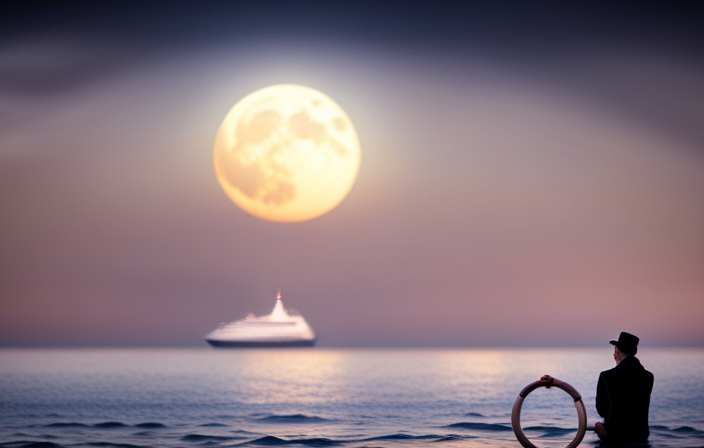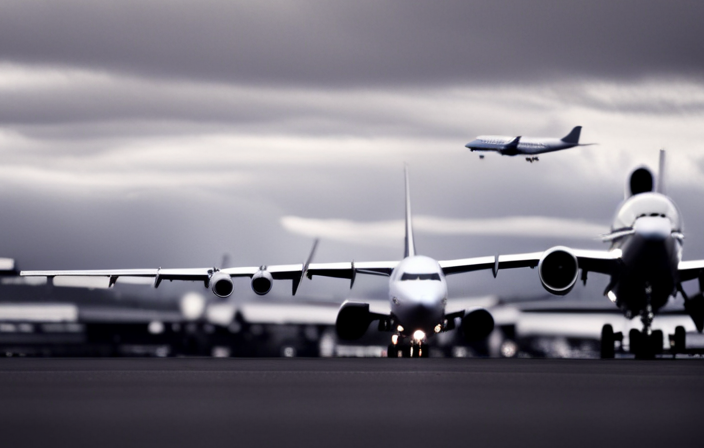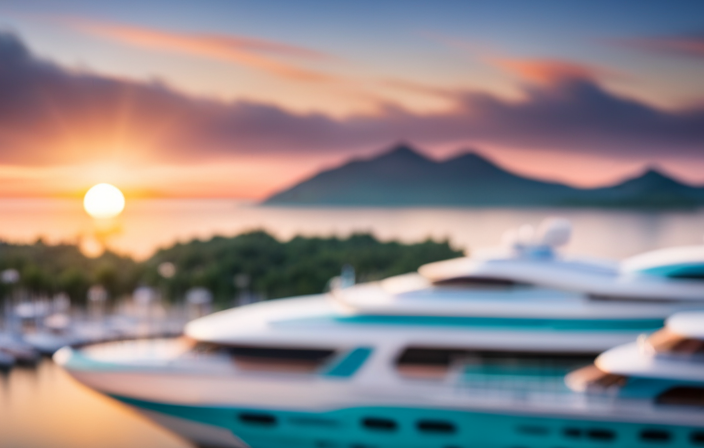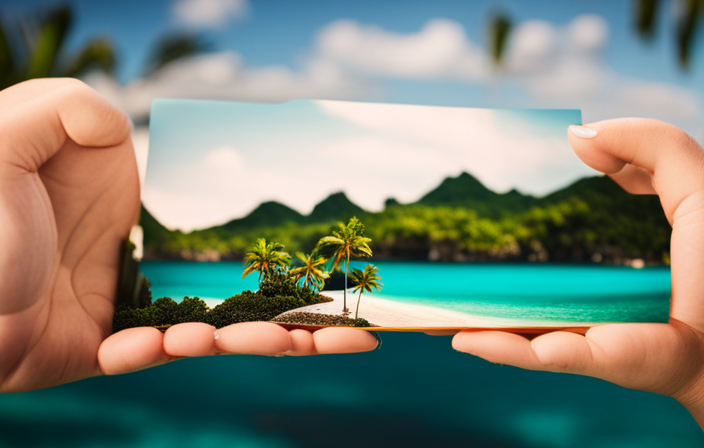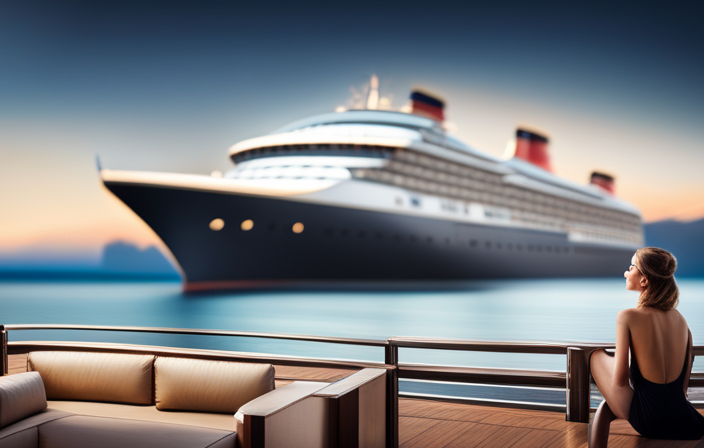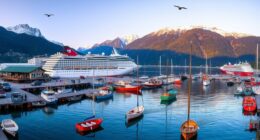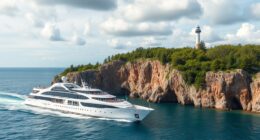Have you ever been curious about how someone might accidentally go overboard on a cruise liner? Even though cruise ships exude an aura of luxury and safety, incidents can still occur.
In this article, we will explore the various factors that can contribute to overboard accidents on cruise ships and discuss the importance of safety measures and awareness for both passengers and crew members.
From the lack of surveillance and monitoring systems to human error and negligence, there are several risks and hazards that can lead to these unfortunate incidents. However, it is crucial to understand that the cruise industry has made significant improvements in safety measures and search and rescue operations over the years.
By educating ourselves about these issues and advocating for stricter regulations, we can ensure a safer and more enjoyable cruising experience for everyone involved.
Key Takeaways
- Underestimating dangers and lack of awareness of risks and weather conditions contribute to overboard accidents on cruise ships.
- Lack of surveillance and monitoring systems, including real-time alerts and monitoring technology, can hinder search and rescue operations.
- Human error and negligence, such as lack of situational awareness and crew negligence, play a significant role in overboard accidents.
- Importance of safety training and emergency drills in preparing passengers and crew for emergencies and preventing accidents.
Understanding the Risks and Hazards on Cruise Ships
To ensure passenger safety onboard cruise ships, it is important to understand the risks and hazards associated with them. Risk management plays a crucial role in mitigating these risks, and cruise ship companies have implemented various measures to ensure safety. This includes conducting regular safety drills, implementing strict protocols for crew responsibilities, and maintaining a well-trained crew. Crew members are essential in ensuring passenger safety, as they monitor the ship’s surroundings and respond promptly to emergencies. They are trained to handle different situations, including man overboard incidents. Understanding the importance of risk management and crew responsibilities is vital for a safe cruising experience.
Now, let’s delve into the factors that contribute to overboard accidents onboard cruise ships.
Factors Contributing to Overboard Accidents
Passengers aboard a cruise ship can unknowingly find themselves in a perilous situation, with a series of unfortunate events acting as a domino effect, leading to a sudden and unexpected plunge into the vast ocean. Underestimating the dangers and failing to fully comprehend the potential risks on a cruise ship can contribute to overboard accidents. Additionally, weather conditions play a crucial role in these incidents. High winds, rough seas, and sudden storms can catch passengers off guard, making it easier to lose balance and fall overboard. To further understand the factors contributing to overboard accidents, consider the following table:
| Factors Contributing to Overboard Accidents |
|---|
| Underestimating the dangers |
| Failing to comprehend risks |
| Inadequate awareness of weather conditions |
| Lack of understanding of ship dynamics |
By analyzing these factors, we can better comprehend the complexities surrounding overboard accidents. Such incidents are often exacerbated by the lack of surveillance and monitoring systems onboard, which will be discussed in the subsequent section.
Lack of Surveillance and Monitoring Systems
To truly grasp the gravity of the situation, imagine being aboard a ship without adequate surveillance and monitoring systems. The effectiveness of surveillance in preventing overboard accidents cannot be overstated. Without proper monitoring technology, it becomes nearly impossible to promptly detect and respond to a person falling overboard.
Surveillance cameras, motion sensors, and other monitoring systems play a crucial role in ensuring the safety of passengers and crew members. These systems can provide real-time alerts and enable immediate search and rescue operations. However, the lack of such systems on some cruise ships greatly increases the risk of accidents going unnoticed or unreported.
This puts lives in danger and contributes to the alarming number of overboard incidents. Moving forward, it is vital to address this issue and implement comprehensive surveillance and monitoring systems to prevent future tragedies caused by human error and negligence.
Human Error and Negligence
Despite the advanced technology available, human error and negligence can still slip through the cracks like a stealthy thief in the night. When it comes to falling overboard on a cruise, these factors play a significant role. Here are three ways human error and negligence can contribute to such incidents:
-
Lack of situational awareness: Passengers may not pay attention to their surroundings or fail to adhere to safety guidelines, increasing the risk of falling overboard.
-
Intoxication: Alcohol consumption can impair judgment and coordination, making individuals more susceptible to accidents, including falling overboard.
-
Crew negligence: In some cases, crew members may fail to properly secure the ship’s railing or adequately monitor passengers, allowing for potential accidents to occur.
Understanding the impact of human error and negligence highlights the importance of safety training and emergency drills. By equipping passengers and crew with the knowledge and skills to respond effectively, we can minimize the occurrence of such incidents and ensure a safer cruising experience.
Importance of Safety Training and Emergency Drills
One crucial aspect of a safe cruising experience is the importance of safety training and emergency drills. These drills are designed to equip both passengers and crew with the necessary knowledge and skills to respond effectively in critical situations.
Safety drills ensure that everyone on board is well-prepared and aware of the emergency procedures, evacuation routes, and proper use of life-saving equipment. Passengers are educated on how to respond in case of a man overboard situation, including throwing life rings and alerting the crew.
Crew members receive specialized training to handle emergencies and coordinate rescue efforts. Emergency preparedness is of utmost importance, as it can mean the difference between life and death in such situations.
With thorough safety drills and training, cruise ships can enhance the overall safety and security of their passengers and crew, ensuring a smooth and enjoyable voyage.
Moving forward, it is essential to understand the cruise line policies and procedures to further address the prevention of accidents at sea.
Cruise Line Policies and Procedures
Passenger safety is tightly woven into cruise line policies and procedures. Cruise lines understand their responsibility in ensuring guest well-being and have implemented comprehensive safety measures. These measures include adhering to maritime laws and regulations, maintaining a safe environment onboard, providing proper crew training, and following emergency response protocols. Cruise lines also have insurance coverage to protect passengers and themselves. By upholding these policies, cruise lines demonstrate their commitment to safety.
Transitioning into the next section about search and rescue operations, it is crucial to understand how these measures are put into action.
Search and Rescue Operations
In order to quickly respond to overboard incidents, cruise lines have well-established search and rescue operations in place.
These operations are designed to locate and retrieve individuals who have fallen overboard. The first step in a search and rescue operation is to initiate immediate action, which includes sounding the alarm, notifying the bridge, and activating the ship’s man overboard systems.
Once the alarm is raised, the crew will begin a thorough search of the ship, including all public areas, cabins, and decks. Additionally, the ship will deploy lifeboats and conduct a search of the surrounding waters.
Legal and regulatory considerations play an important role in these operations, as cruise lines must comply with international maritime laws and regulations. They must also coordinate with local authorities and follow specific protocols to ensure a thorough and efficient search.
Moving on to the next section about legal and regulatory considerations…
Legal and Regulatory Considerations
Legal and regulatory considerations play a crucial role in search and rescue operations conducted by cruise lines.
As part of their responsibility, cruise lines must comply with international maritime laws and regulations. This involves coordinating with local authorities and following specific protocols to ensure the safety and well-being of passengers.
One of the key legal implications of such operations is liability considerations. Cruise lines must be aware of their potential liability in case of accidents or incidents at sea, including falling overboard situations. They need to establish robust safety measures and protocols to minimize the risk of such incidents and mitigate their liability.
This includes providing proper training to crew members, implementing safety equipment and procedures, and maintaining strict adherence to international maritime laws.
These legal and regulatory considerations are essential in safeguarding passengers and ensuring a safe and enjoyable cruise experience.
Transitioning to the subsequent section about awareness and education for passengers, it is crucial to emphasize the importance of proactive measures in preventing accidents at sea.
Awareness and Education for Passengers
One way to ensure a safe and enjoyable cruise experience is by actively educating and raising awareness among travelers. Passengers have a responsibility to familiarize themselves with safety procedures and guidelines provided by the cruise line. This includes attending mandatory safety drills and reading safety information available in their cabins.
Additionally, it is crucial for passengers to be aware of their surroundings and exercise caution while on deck, especially during rough seas or inclement weather.
Crew communication plays a vital role in passenger safety. The crew members are trained to handle emergency situations and are responsible for relaying important information to passengers. They communicate through announcements, signage, and regular updates. It is essential for passengers to listen carefully and follow instructions provided by the crew.
By being aware and educated, passengers can actively contribute to their own safety and the safety of others on board.
As the cruise industry continues to prioritize safety, improvements and innovations in cruise ship safety measures are constantly being implemented.
Improvements and Innovations in Cruise Ship Safety Measures
Imagine stepping onto a cruise ship where state-of-the-art safety measures and groundbreaking innovations create an environment that feels like floating in a protective bubble of security. Cruise lines have made significant advancements in improving emergency response and implementing technological innovations to ensure passenger safety. One such improvement is the use of advanced surveillance systems that monitor the ship’s surroundings and detect any potential dangers in real-time. These systems are equipped with motion sensors, thermal imaging, and facial recognition capabilities to identify and respond to any suspicious activity. Additionally, cruise ships now have improved emergency response protocols in place, including the installation of advanced medical facilities and the use of rapid deployment rescue boats. These measures not only enhance passenger safety but also provide peace of mind, knowing that the cruise industry is continuously investing in new technologies to ensure a safe and enjoyable experience for all.
| Technological Advancements | Improved Emergency Response |
|---|---|
| Advanced surveillance systems | Installation of advanced medical facilities |
| Motion sensors, thermal imaging, and facial recognition capabilities | Rapid deployment rescue boats |
| Real-time monitoring of ship surroundings | Enhanced emergency response protocols |
Frequently Asked Questions
Are there any specific cruise lines that are more prone to overboard accidents?
Some cruise lines may have higher instances of overboard accidents due to various factors, including inadequate safety measures, lack of surveillance, and insufficient crew training. It is important to research a cruise line’s safety record before booking a trip.
How often do overboard accidents occur on cruise ships?
Overboard accidents on cruise ships are relatively rare. Cruise ship safety measures, such as surveillance cameras and railings, help prevent such incidents. In the event of an accident, thorough investigation procedures are conducted to determine the cause.
Can bad weather contribute to overboard accidents?
Bad weather can contribute to overboard accidents by creating rough seas and strong winds, which can make it easier for someone to lose their balance and fall overboard. Additionally, alcohol consumption can impair judgment and coordination, increasing the risk of accidents. Proper crew training is essential in preventing overboard incidents by ensuring that crew members are trained in safety procedures and can respond quickly and effectively in emergency situations.
What actions can passengers take to prevent falling overboard?
To prevent falling overboard on a cruise ship, passengers should always stay alert and follow safety measures. These actions include staying away from railings, wearing appropriate footwear, and not leaning over the edge of the ship.
Are there any medical conditions that increase the risk of falling overboard on a cruise ship?
Having certain medical conditions can increase the risk of falling overboard on a cruise ship. Factors such as dizziness, vertigo, or poor balance can make someone more prone to accidents on deck, especially in rough seas.
Conclusion
In conclusion, it is important for cruise ship passengers to understand how someone can fall overboard. Factors like lack of surveillance systems, human error, and negligence contribute to these accidents. Safety training and emergency drills are crucial for prevention. Search and rescue operations are vital for saving lives, and legal and regulatory considerations ensure accountability. Passengers must educate themselves and stay vigilant onboard. Constant improvements in safety measures aim to provide a safer and more enjoyable experience for all.

